Walking through a forest canopy offers a completely different perspective than hiking ground-level trails. These elevated walkways suspend visitors high above the forest floor, providing intimate access to an ecosystem that most people never experience.
From swaying suspension bridges to sturdy platforms built around ancient trees, these canopy walks reveal the hidden world where birds nest, monkeys play, and rare plants thrive in the filtered sunlight. The following destinations showcase some of the world’s most remarkable tree canopy experiences. Here is a list of 15 elevated walkways that let you explore forests from an entirely new vantage point.
Capilano Suspension Bridge
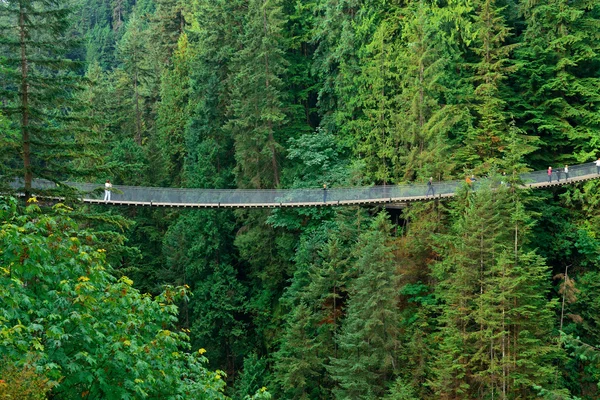
Vancouver’s famous suspension bridge stretches 450 feet across the Capilano River, swaying 230 feet above the forest floor. The bridge connects to a series of smaller suspension bridges called Treetops Adventure, which wind through the ancient Douglas fir canopy.
Despite the tourist crowds, the experience of walking among 100-year-old trees while the bridge gently moves beneath your feet creates a genuine sense of being suspended in nature. The Cliffwalk section adds another dimension, with narrow walkways jutting out from the granite cliffside.
Valley of the Giants Tree Top Walk
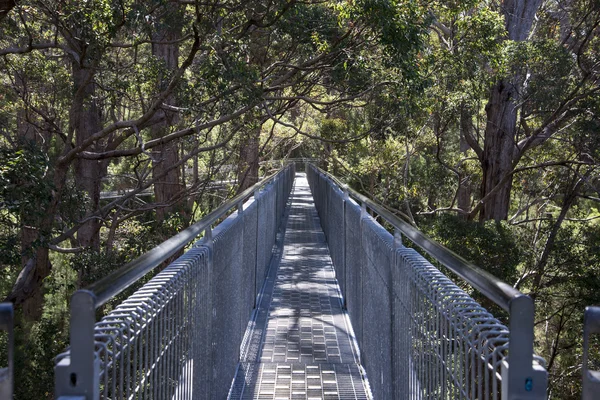
Located in Western Australia’s Walpole-Nornalup National Park, this 2,000-foot walkway curves through towering tingle trees that can live over 1,000 years. The steel and timber structure rises 130 feet above the ground, offering close encounters with tree trunks so massive that it would take 20 people holding hands to encircle them.
The walkway’s gentle spiral design allows visitors to ascend gradually while rare birds like the red-winged fairy-wren dart between branches just an arm’s length away. The viewing platform at the walk’s highest point provides panoramic views across the forest canopy to the Southern Ocean.
Like Travel Pug’s content? Follow us on MSN.
Otway Fly Treetop Adventures
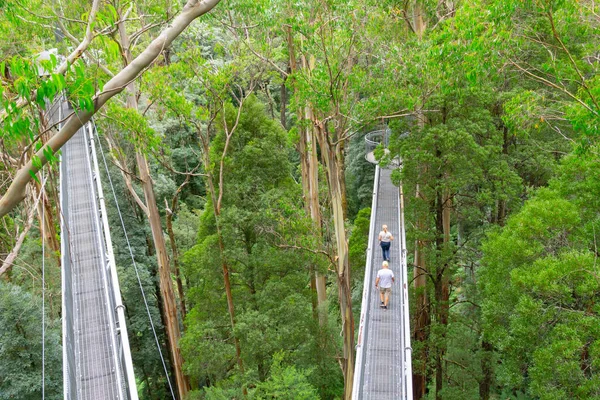
The Otway Ranges in Victoria, Australia, host this 2,000-foot walkway that winds 100 feet above a temperate rainforest floor. Ancient mountain ash trees create a cathedral-like canopy overhead while tree ferns spread their fronds 30 feet wide below the walkway.
The structure includes a spiral tower that adds another 150 feet of elevation, bringing visitors to the forest’s uppermost reaches where different plant communities thrive. Morning visits often coincide with mist drifting through the canopy, creating an almost mystical atmosphere as sunlight filters through the fog.
Borneo Rainforest Canopy Walkway
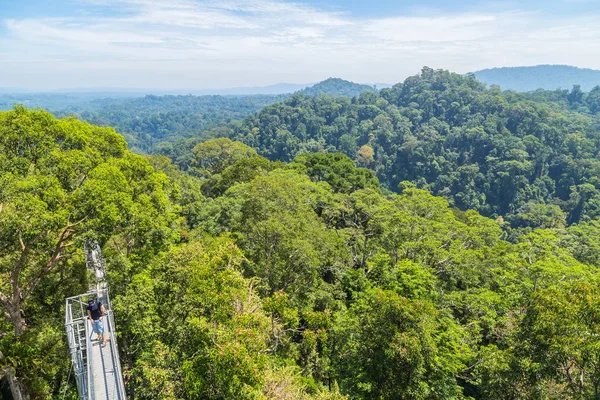
Deep in Malaysia’s Danum Valley, this 980-foot walkway reaches heights of 130 feet among some of the world’s oldest rainforest trees. The location within a protected research area means wildlife encounters are frequent—orangutans, gibbons, and over 300 bird species call this canopy home.
The walkway’s remote location requires a multi-day commitment, but the payoff includes witnessing the sunrise from the forest canopy while hornbills call in the distance. Scientists often use this same walkway for research, so visitors sometimes share the experience with researchers studying the canopy ecosystem.
Monteverde Cloud Forest Sky Walk
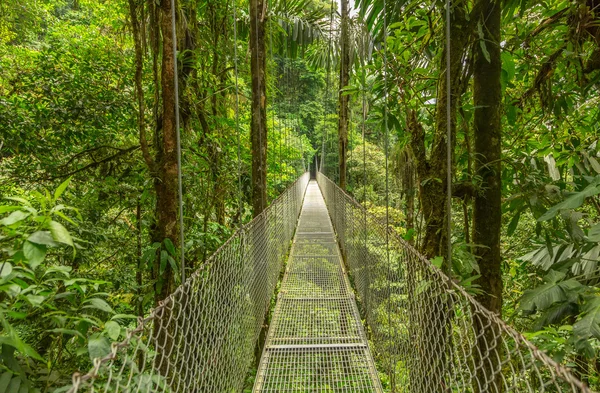
Costa Rica’s cloud forest creates a unique environment where persistent mist nourishes an incredible diversity of epiphytes—plants that grow on other plants without parasitizing them. The Sky Walk’s suspension bridges and platforms wind through this misty world 150 feet above the forest floor, where orchids, bromeliads, and mosses coat every surface.
The constant moisture creates a greenhouse effect that supports over 2,500 plant species in a relatively small area. Howler monkeys often provide a soundtrack while quetzals flash their brilliant colors among the branches.
Like Travel Pug’s content? Follow us on MSN.
Hollybank Treetops Adventure

Tasmania’s Hollybank Forest features the Southern Hemisphere’s longest single-span suspension bridge, stretching 650 feet through the eucalyptus canopy 65 feet above the forest floor. The walkway system includes multiple platforms connected by cables and bridges, creating an aerial obstacle course through the forest.
Ancient man ferns growing beneath the walkway can reach 20 feet in height, their prehistoric fronds creating patterns of light and shadow on the forest floor. The experience combines adventure with education, as interpretive signs explain the forest’s unique ecosystem.
TreeHouse Point Suspension Bridge
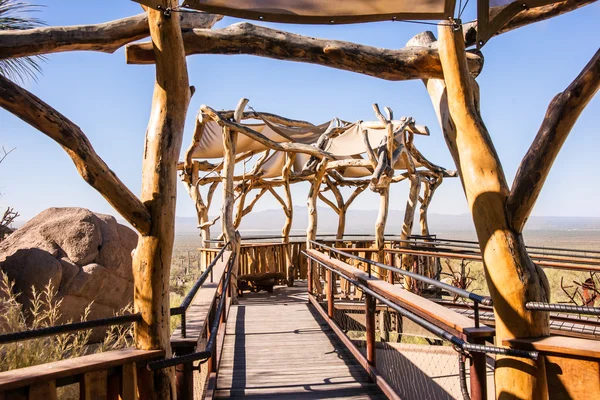
Located in Washington State’s Snoqualmie Valley, this intimate walkway connects treehouses built around massive Douglas fir and cedar trees. The suspension bridge sways gently 50 feet above a babbling creek, creating a more personal canopy experience than the larger commercial walkways.
Visitors can spend the night in the connected treehouses, waking up literally in the forest canopy as morning light filters through the branches. The smaller scale allows for closer observation of forest details—spider webs jeweled with dew, woodpecker holes in ancient bark, and the intricate branching patterns of Pacific Northwest conifers.
Kirstenbosch Centenary Tree Canopy Walkway
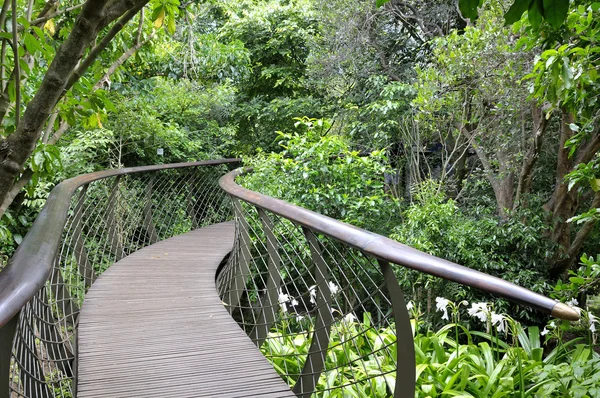
South Africa’s national botanical garden features a curved walkway that snakes through the forest canopy 40 feet above the ground. The walkway’s design follows the natural contours of the yellowwood and stinkwood trees, creating an organic path through the indigenous forest.
Table Mountain forms a dramatic backdrop while the walkway provides access to the forest’s middle story, where different plant communities exist than those at ground level. The steel and timber construction allows the walkway to flex with the trees during high winds, maintaining the forest’s natural movement patterns.
Like Travel Pug’s content? Follow us on MSN.
Treetop Walkway at Kew Gardens
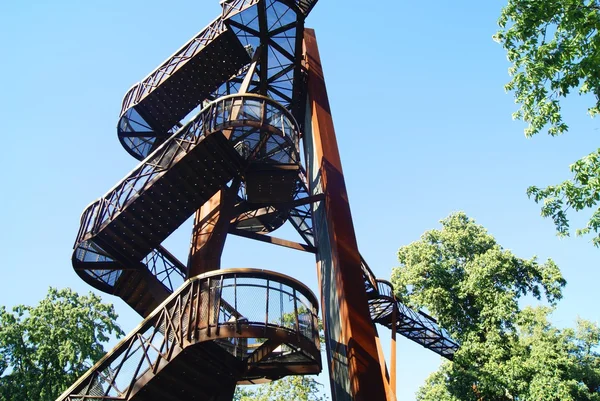
London’s Royal Botanic Gardens features a 650-foot walkway that rises 60 feet into the canopy of a 200-year-old woodland. The walkway provides a unique urban forest experience, demonstrating how mature trees create complex ecosystems even in city environments.
The structure includes educational stops that explain canopy ecology, showing how different animals and plants utilize various forest levels. From the walkway’s highest point, visitors can see across London while standing among oak, beech, and chestnut trees that predate the city’s modern development.
Rainforest Discovery Centre Canopy Walk
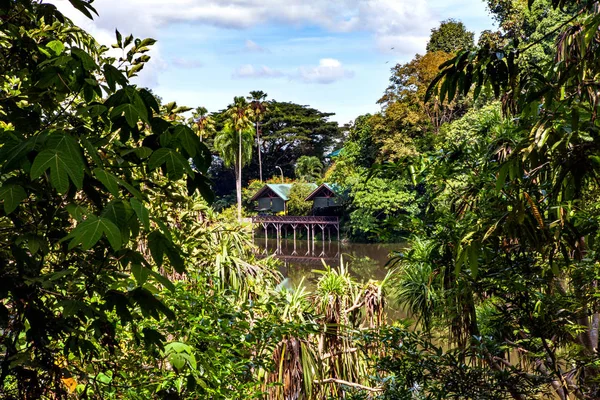
In Malaysia’s Sepilok area, this walkway extends 1,150 feet through the dipterocarp rainforest, reaching heights of 130 feet above the forest floor. The location near the Sepilok Orangutan Rehabilitation Centre means wildlife encounters are common—macaques, hornbills, and occasionally, orangutans use the same trees that support the walkway.
The canopy walk provides access to different forest layers, from the emergent giants that tower above the main canopy to the understory, where different plant communities thrive in lower light conditions. Early morning visits offer the best wildlife viewing as the forest awakens.
Aerial Walk at West Coast Tree Top Walkway
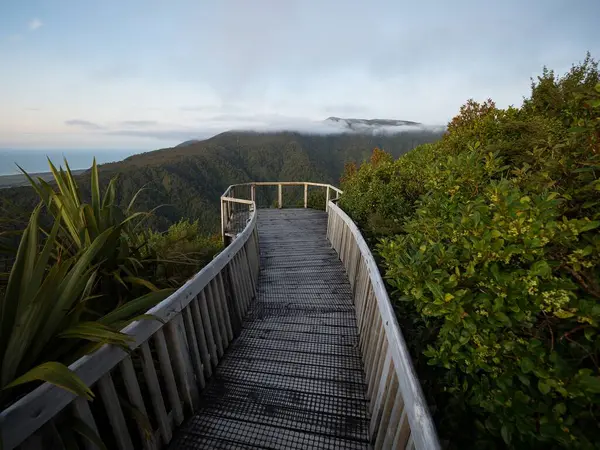
New Zealand’s West Coast features this 1,500-foot walkway through temperate rainforest dominated by rimu and rata trees. The walkway reaches 130 feet above the forest floor, providing access to a canopy ecosystem that includes numerous epiphytes and native birds like the tui and bellbird.
The Southern Alps form a dramatic backdrop while the walkway winds through trees that can live over 1,000 years. The experience includes a 130-foot spiral tower that provides 360-degree views across the forest to the Tasman Sea.
Like Travel Pug’s content? Follow us on MSN.
Tamborine Rainforest Skywalk
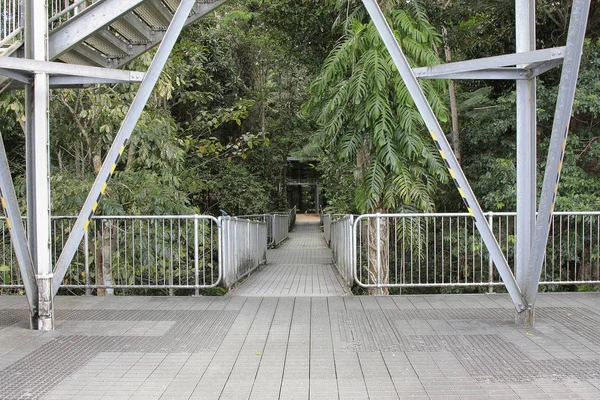
Queensland’s Gold Coast hinterland hosts this 1,000-foot walkway through subtropical rainforest 100 feet above the ground. The walkway provides access to multiple forest layers, from the canopy, where strangler figs wrap around host trees, to the mid-story, where epiphytes create hanging gardens.
The location within a private reserve means the forest remains largely undisturbed, supporting wildlife populations that include pademelons, pythons, and over 80 bird species. The walkway includes a cantilever section that extends 130 feet beyond the cliff edge, providing views across the Nerang Valley.
Myakka River State Park Canopy Walkway
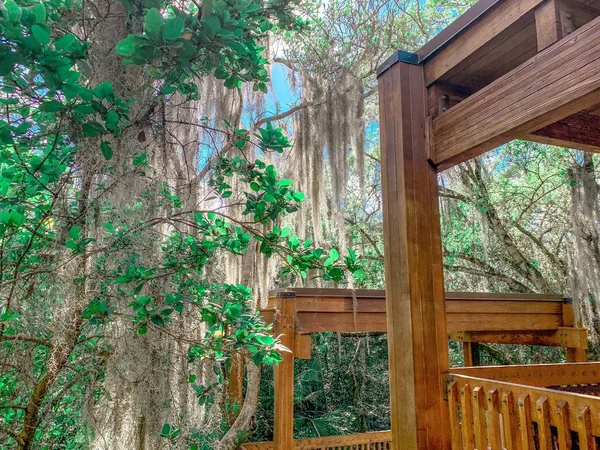
Florida’s canopy walkway extends 85 feet above a hardwood hammock dominated by live oaks draped in Spanish moss. The walkway provides access to the canopy ecosystem that supports numerous bird species, including painted buntings and wood storks.
The structure includes a 74-foot observation tower that provides panoramic views across the Myakka River floodplain. The walkway demonstrates how Florida’s forest canopies create microclimates that support different plant communities than those found at ground level.
Iguazu Falls Canopy Walk
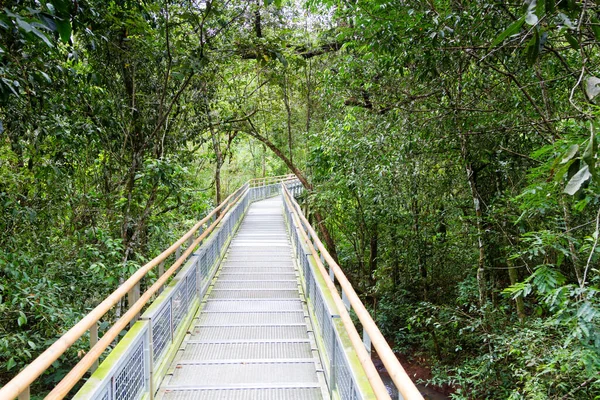
Located in Argentina’s Iguazu National Park, this walkway winds through subtropical rainforest above the Upper Iguazu River. The canopy experience complements visits to the famous waterfalls, showing how the forest ecosystem creates the watershed that feeds the falls.
Toucans, coatis, and over 400 bird species inhabit this canopy, while the constant mist from nearby waterfalls creates ideal conditions for epiphytes and ferns. The walkway provides a different perspective on the park’s biodiversity, focusing on the forest ecosystem rather than just the dramatic waterfalls.
Like Travel Pug’s content? Follow us on MSN.
Ancient Forest Canopy Walk
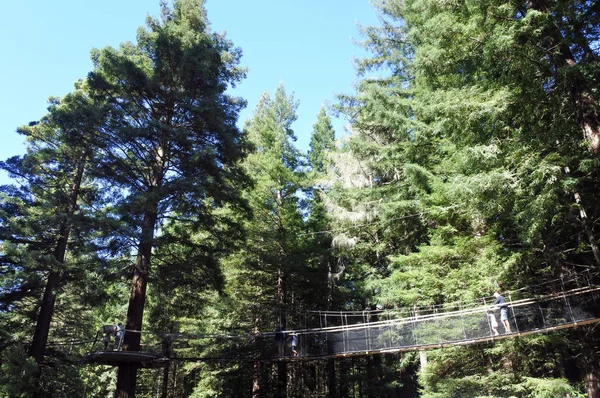
British Columbia’s Ancient Forest features boardwalks and platforms that wind through a rare inland temperate rainforest 100 miles from the Pacific Ocean. The walkway provides access to 1,000-year-old western red cedars and Douglas firs that create a cathedral-like canopy 200 feet overhead.
The location’s unique climate allows coastal forest species to thrive far inland, creating an ecosystem found nowhere else in the world. The walkway system includes interpretive stops that explain how these ancient trees survived ice ages and natural disasters to reach their current massive size.
Where Forest Meets Sky
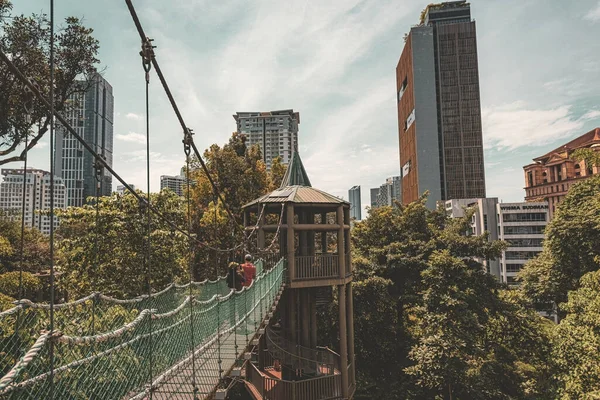
These canopy walks transform how we experience forests, revealing the complex ecosystems that exist above our heads in the everyday world below. Each walkway provides access to wildlife, plants, and perspectives that remain hidden from ground-level hikers, creating a deeper understanding of forest ecology while delivering genuine adventure.
Whether suspended above ancient cedars in British Columbia or walking through misty cloud forests in Costa Rica, these elevated experiences remind us that forests are three-dimensional communities where some of nature’s most remarkable interactions happen dozens of feet above the ground.
More from Travel Pug

- 20 Best Beach Towns in the Carolinas
- 13 Destinations Where Tourists Regularly Regret Their Trip
- 20 Things You Actually Get in First Class
- 20 Small Airports With Aviation Museums
- 20 Places in the U.S. That Are Perfect for a Reset Trip
Like Travel Pug’s content? Follow us on MSN.
